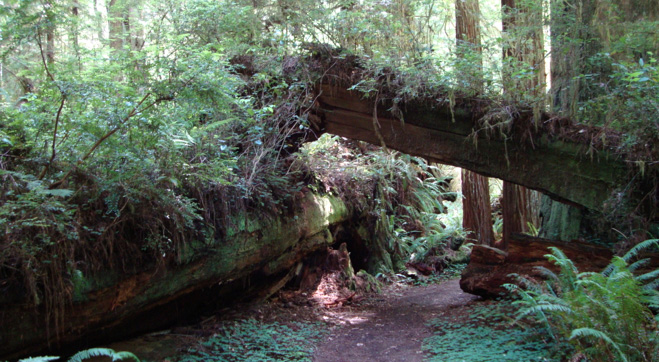How To Profit From Customer Problems
This summer, I vacationed in Redwoods National Park on the northern coast of California. Each day, my husband and I enjoyed peaceful hikes among the awe-inspiring trees that towered several hundred feet above us. But one thing caught me off guard: Far more often than I had anticipated, we encountered redwoods ripped from their roots, sprawled horizontally across the forest floor. Most had taken several other trees down with them. At first, I lamented the fate of each of these fallen giants. How unfortunate, I thought, that such a magnificent redwood would grow for half of a millennium, only to be toppled over in an unforgiving windstorm or to have its base weakened by fire.
And then I realized that the fallen trees might actually be a good thing. Standing at the base of each upended root system and looking up toward the sky, I could see a hole punched in the canopy above me that allowed rays of sunlight to reach the forest floor. I’m no biologist, but the sunlight seemed to encourage lush undergrowth that was absent elsewhere. Informational signs confirmed my suspicions: “Massive logs crisscross the forest floor, holding soils in place. Dozens of species of insects, birds, and mammals use them for shelter and food over the centuries of decay. Tanoaks, hemlocks, ferns, and huckleberries sprout on the nurse logs . . . Insects and bacteria live and feed on the wood.”

Reflecting back on my hikes through the redwood forest, I can’t help but wonder: What do most companies do when they encounter the customer experience equivalent of a fallen tree?
Your customer experience ecosystem is the complex set of relationships among your company’s employees, partners, and customers that determines the quality of all customer interactions. And more than likely, your ecosystem has lots of fallen trees scattered around: customer problems that drive business results like higher service costs, lower revenue, and customer attrition. You could lament these problems, as I initially did the dead trees. You could try to fix the immediate problems, the equivalent of hoisting a fallen redwood back onto its defunct root system. Or, you could try to profit from the problem, as the forest has so adeptly learned to do.
When I say “profit,” I’m not talking about gouging your customers with fees, charging them to service something that shouldn’t have broken in the first place, or sacrificing customer ease and enjoyment to squeeze a few more bucks out of your budget. That would be like the forest fairies selling off the redwood logs to be made into furniture and flooring. What I’m talking about is leveraging potentially negative situations to ultimately drive a healthier, more vibrant customer experience ecosystem in the long run.
To do this, you need to get to the root of the problem (pun intended), and the best way to do that is through a process called ecosystem mapping.
In Outside In, we describe how John Birrer, the senior vice president of customer experience at Charter Communications, mapped the Charter ecosystem to get to the root of a problem for Charter’s small-business customers, who were struggling to install the company’s new and improved software on their routers. John started by writing down each step of the customer journey, beginning at the moment customers purchased the software and ending at the point where they called for help but didn’t get it. Then he carefully listed each Charter employee, process, and system that the customers touched along the way, either directly or indirectly. He drew lines between the players to show how they were connected.
When he was finished, he realized the small-business sales reps who sold the software were blissfully unaware of the problems the customers faced. That’s because they got their commissions based on sales, not installations — even though they’d contributed to the problem by not communicating the technical requirements in the first place.
Not surprisingly, John made swift changes to the sales reps’ compensation plan, ensuring they had a vested interest in successful installations. And ultimately, he changed the dynamics of the Charter ecosystem in a way that didn’t just fix software installation issues when they arose but prevented them from happening in the first place. That’s what I consider truly profiting from customer problems.
To learn more about the concepts and frameworks in Outside In, join us at Forrester’s Customer Experience Forums: November 6th to 7th in London and November 14th to 15th in Los Angeles.